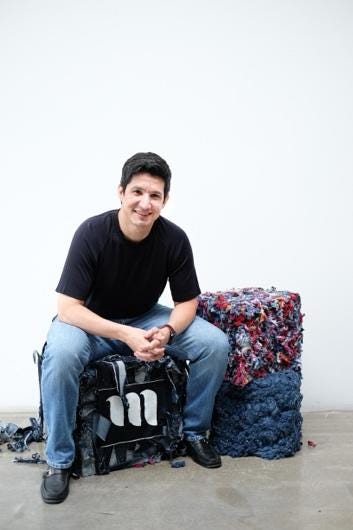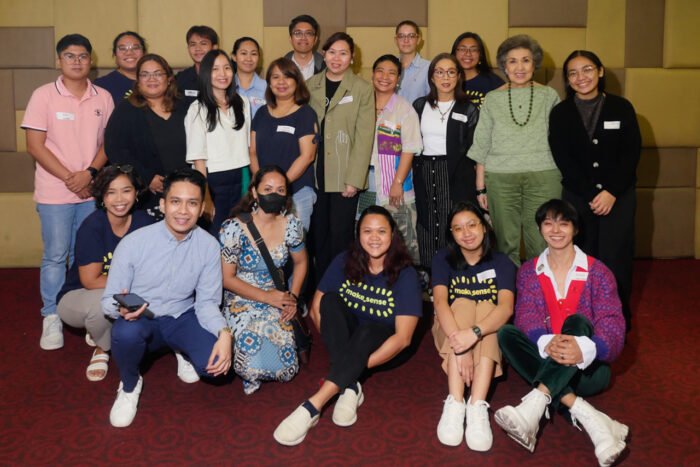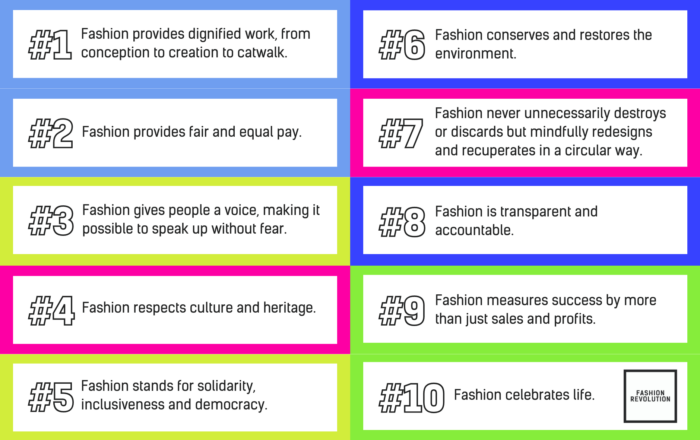Vaatteiden tunnearvolla on suuri merkitys sille, miten hyvin huollamme vaatteitamme ja miten pitkään ne pysyvät käytössämme. Siksi vastuullisuus on myös vaatteidemme rakastamista.
Vaatteiden vastuulliseen ja kestävään kulutukseen liittyy useita eri aspekteja, ja erityisesti vastuullisesti tuotettujen vaatteiden ostamisen roolia ollaan korostettu vastaiskuna pika- tai ultrapikamuotiketjujen tuotteiden ostamiselle. Vastuullisesti tuotettujen vaatteiden suosimisen lisäksi on vähintään yhtä tärkeää kiinnittää huomiota siihen, kuinka käytämme ja huollamme vaatteita. Kuluttamisella viitataankin itse ostopäätöksen tekemisen lisäksi kaikkeen siihen, mitä tapahtuu ostohetken jälkeen: miten vaatetta käytetään, säilytetään ja huolletaan, ja miten siitä loppujen lopuksi hankkiudutaan eroon, kun se ei enää täytä tarpeitamme. Se, miten kohtelemme vaatteitamme ei ole yhdentekevää, ja merkittävimpiä ympäristötekoja, jota voimme kunkin vaatteen kohdalla tehdä, on maksimoida niiden käy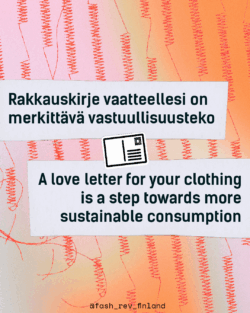 ttöikä ja ottaa niistä kaikki ilo irti niin pitkään kuin suinkin vain on mahdollista.
ttöikä ja ottaa niistä kaikki ilo irti niin pitkään kuin suinkin vain on mahdollista.
Lähtökohdat vaatteiden elinkaaren pidentämiseen sekä vaatteen kestävyyteen ovat jokaisen yksilön ja vaatteen kohdalla erilaiset ja riippuvat monista eri tekijöistä. Yksi tekijä, joka harvemmin nousee keskustelun aiheeksi, on tunneside vaatetta kohtaan. Anniina Nurmi toteaa kirjassaan Rakastan ja vihaan vaatteita vastuullisuuden olevan rakkautta vaatteita kohtaan. Vaatteella voikin rahallisen tai käytännöllisen arvon lisäksi olla erityistä tunnearvoa, joka puolestaan saa meidät huolehtimaan niistä paremmin.
Vaatteen tunnearvolla viitataan usein vaatteen kykyä säilyttää merkityksensä, haluttavuutensa ja paikkansa osana vaatekaapin sisältöä pitkänkin ajan kuluessa. Tarve tai halu korvata vaate uudella vähenee, sillä tunneside liittyy nimenomaisesti jo omasta vaatekaapista löytyvään kappaleeseen. Vahva, positiivinen tunneside johtaa tutkitusti parempaan huolenpitoon vaatteesta – säilytykseen, pesuun ja käyttöön kiinnitetään tarkempaa huomiota, ja pienet kulumat tai viat pyritään korjaamaan mahdollisuuksien mukaan. Vaikka tälläiset yksittäiset teot yksittäisen vaatteen kohdalla voivat tuntua pieniltä, ne ovat tosiasiassa merkittävä tapa pidentää vaatteen elinkaarta ja siten vaikuttaa sen vastuullisuuteen. Mitä jos kohtelisimme jokaista vaatettamme tällaisella tunnelatauksella?
Tunnesiteen muodostuminen ei kuitenkaan ole looginen tai järkiperäinen prosessi, eikä sen muodostumista voi aina ennakoida. Tunnesiteitä on myös monia erilaisia, ja ne voivat syntyä tai rakentua useita eri reittejä. Tunnesiteen syntymistä voidaan edistää suunnittelulla, joka tukee vaatteen kestävyyttä yleisellä tasolla ja pyrkii varmistamaan, että vaatteet ikääntyvät kauniisti ja vastaavat käyttäjänsä tarpeisiin mahdollisimman monipuolisesti. Kuluttajien osallistaminen suunnitteluprosessiin voi myös tukea tunnesiteen syntymistä, sillä se luo mahdollisuuden tehdä vaatteesta juuri omannäköinen ja omiin tarpeisiin vastaava.
Yksilön oma panos vaatteeseen voi olla yksi merkittävimmistä tavoista luoda tunneside vaatteeseen. Oman kädenjäljen näkeminen ja arvostaminen vaatteessa korjaamisen, personoinnin tai suunnittelun kautta voi synnyttää positiivisen tunnelatauksen tai vahvistaa sitä entisestään. Vaatteiden työstäminen itse tai yhteistyössä itselleen läheisen henkilön kanssa on merkittävä tapa rakentaa tunnesidettä tarkoituksenmukaisesti, ja siksi vaatteiden korjaustaidot ovatkin tärkeitä vaatteen elinkaaren pidentämiseksi.
Aina vahva tunneside ei välttämättä liity suoranaisesti vaatteen vastuullisuuteen tai elinkaaren pidentämiseen. Häämekko on esimerkki vaatteesta, jota suurin osa ihmisistä käyttää vain yhtenä päivänä elämässään, mutta säilyttävät sitä vuosikausia jälkeenpäin siksi, että vaate on ollut tärkeä osa juhlapäivää, johon liittyy valtava, positiivinen tunnelataus. Yleisestikin vaatteen yhdistäminen johonkin itselle merkitykselliseen tapahtumaan, henkilöön tai ajankohtaan elämässä voi luoda siihen vahvan tunnesiteen, vaikka vaate ei välttämättä muuten edes olisi löytänyt tietään osaksi vaatekaapin sisältöä vuosikausien ajaksi. Mökkivaatteeksi päätynyt huppari voi muistuttaa lapsuuden kesistä, pieneksi jäänyt mekko ylioppilaaksi valmistumisesta tai keikkapaita uskomattomasta kokemuksesta. Lahjaksi saadut tai perityt vaatteet voivat sisältää vahvan tunnelatauksen ja muistuttaa vaatteen alkuperästä aina sitä käytettäessä – erilaisia esimerkkejä on lukemattomia, ja ne kaikki kertovat omanlaisensa tarinan.
Rakkauskirjeitä vaatteillemme -taidenäyttely
Rakkaus vaatteitamme kohtaan on merkittävä tapa pyrkiä kohti vastuullisempaa kuluttamista, ja siksi haluammekin kerätä tarinoita ja vaatekappaleita, joilla on käyttäjilleen vahva tunnearvo ja luoda näiden pohjalta taidenäyttely. Tarkoituksemme on valokuvata vaatteet ja liittää niiden oheen rakkauskirje vaatteen omistajalta, joka kuvaa vaatteen tarinaa ja sitä, kuinka tunneside siihen on syntynyt ja miten tuo tunneside on vaikuttanut siihen, miten vaatetta on käytetty vuosien saatossa. Haluamme korostaa vaatteiden tunnearvon tärkeyttä osana vastuullista kuluttamista ja kerätä kokemuksia ja tarinoita, jotka tukevat tätä viestiä.
Tavoitteemme on luoda taidenäyttely, jonka jokainen voi olla mukana tekemässä lähettämällä meille tiedot valitsemastaan vaatteesta. Me valokuvaamme vaatekappaleen ja painamme kuvan sekä rakkauskirjeen vaatteelle osaksi näyttelyä, joka järjestetään myöhemmin tänä vuonna.
Jos haluat osallistua näyttelyn tekemiseen, ota meihin yhteyttä! Näyttelyyn lähetettävä vaate voi olla uusi tai vanha, korjattu, muokattu, vintagelöytö tai yksinkertaisesti vaate, jota pidät rakkaana ja jonka pariin palaat yhä uudelleen. Se voi olla suosikkivillapaitasi, jota olet käyttänyt lukemattomia kertoja, tai vaate, joka liittyy erityiseen hetkeen elämässäsi – haluamme kuulla sinun, ja erityisesti vaatteesi tarinan!
Cada día, somos bombardeados con información sobre la crisis ambiental, social y cultural en la industria de la moda. Pero, ¿realmente estamos tomando acción o simplemente esperando a que las marcas y gobiernos lo hagan por nosotros? No se trata solo de comprar menos o reciclar más, sino de convertirnos en agentes de cambio que exigen responsabilidad y transparencia. Para comprender mejor cómo podemos hacerlo, entrevistamos a tres expertos del sector: Cecilia Manzur, Diseñadora y Modelista de Vestuario y Asesora de Imagen, Chile, y Alicia Mares, Corresponsal de Negocios de Moda en México y Latinoamérica para Fashion Network y Alfonso Martínez Equihua, Director General de Industrias Marves y Co Fundador re.colecto.
A través de sus perspectivas, reiteramos estrategias clave que cada consumidor puede implementar para impulsar transformaciones reales en la industria.
Dejar de Esperar Información: El Poder del Conocimiento
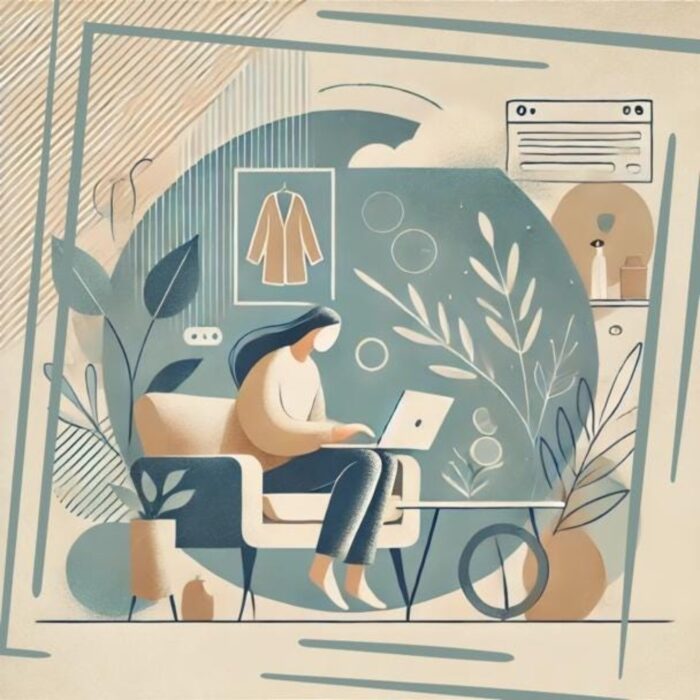
Cecilia Manzur enfatiza que uno de los primeros pasos para generar cambios es dejar de esperar que la información nos llegue sola. Como consumidores, debemos buscar activamente datos sobre marcas, procesos de producción y sostenibilidad. Preguntar en tiendas sobre sus políticas de reciclaje o fabricación, no solo nos da herramientas para tomar mejores decisiones, sino que presiona a las empresas a ser más transparentes.
Desde su experiencia como asesora de imagen, Cecilia también destaca que enseñar a otros sobre consumo responsable, selección de prendas de calidad y exploración de opciones, como la ropa de segunda mano, puede marcar la diferencia. Como diseñadora, considera que el cambio también debe venir de la industria, diseñando colecciones con materiales sostenibles y procesos de producción más éticos.
Por otro lado, Alfonso nos dice que “el consumidor tiene mucho más poder y responsabilidad en la industria de la moda de lo qué cree. Cada compra manda un mensaje al mercado, y las grandes marcas están escuchando”.
Redes Sociales: ¿Herramienta de Cambio?
Alicia Mares nos recuerda que en la era digital, los consumidores tienen un poder sin precedentes. Antes, los movimientos sociales requerían marchas y protestas; hoy, “ya no es de boca en boca, es de publicación en publicación”, nos dice. Sin embargo, advierte que este poder debe usarse con responsabilidad. Un mal uso de la información puede desacreditar esfuerzos genuinos y desviar la atención de los verdaderos problemas.
De igual forma nos comenta que además de ser una herramienta de denuncia y presión, las redes sociales también funcionan como una fuente inagotable de información y conocimiento. Ahora, desde nuestras redes sociales, podemos cuestionar a las marcas, compartir información sobre eventos, iniciativas, y apoyar a proyectos sostenibles, lo que dirige al consumidor a hacer compras más conscientes. La clave está en filtrar la información, verificar fuentes y compartir contenido que realmente aporte valor a la conversación, lo que generará transformación.
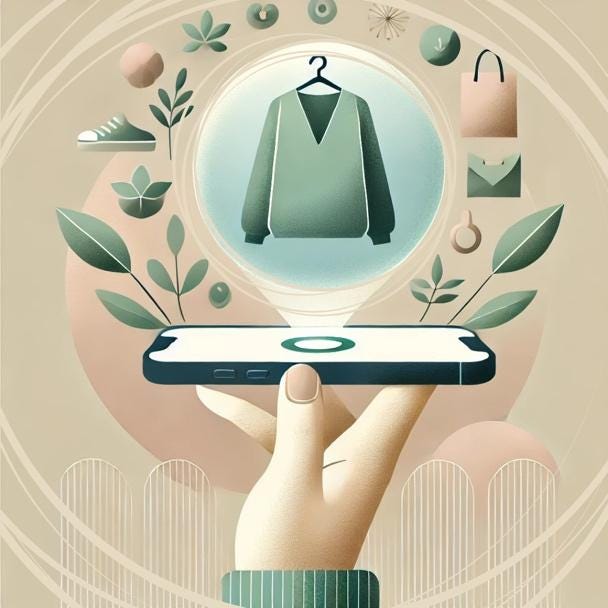
Asimismo nos dice que la propagación de campañas, iniciativas, testimonios de consumidores, etc. ha demostrado ser un motor de cambio en la industria. Cuando una marca es señalada por prácticas poco éticas, la presión mediática puede obligarla a modificar sus procesos. Pero del mismo modo, cuando una empresa implementa políticas responsables, los consumidores pueden amplificar ese mensaje, generando una demanda por productos y servicios alineados con la sostenibilidad; “un simple clic puede hacer muchísima diferencia”, nos dice Alicia.
De igual forma, resalta la importancia de participar activamente, por ejemplo al prolongar la vida útil de nuestras prendas a través de la reparación, el reciclaje y la compra de ropa de segunda mano. Esto no solo reduce el impacto ambiental, sino que envía un mensaje claro a la industria sobre la creciente demanda de alternativas sostenibles. Al respecto, Alfonso nos explica que re.colecto proporciona una oportunidad de mucho menor impacto al desechar nuestras prendas y presenta la oportunidad de darles una segunda vida.
Transparencia: El Vínculo Perdido entre Consumidores, Gobiernos y Marcas

Tanto Cecilia como Alicia coinciden en que la falta de transparencia y comunicación de gobiernos y marcas obstaculiza el avance hacia una moda sostenible. Cecilia nos habla sobre la Ley REP (Ley de Responsabilidad Extendida del Productor) en Chile, la cual incentiva a las empresas a implementar prácticas más responsables, otorgándoles puntajes adicionales en licitaciones y promoviendo la recolección de residuos. Por otro lado, Alicia nos comenta sobre iniciativas como la feria “Original”, que apoya a los artesanos, y la prohibición de pruebas cosméticas en animales en México, avances importantes, pero que su escasa difusión hace que pasen desapercibidos.
De igual modo, Alfonso estipula que “en México, aún falta camino en regulaciones que incentiven una industria textil más sostenible. Nos dice que “se habla de la responsabilidad extendida del productor”, pero que “también es clave la corresponsabilidad del consumidor” y que “la solución no está solo en las marcas ni en los gobiernos: está en una mayor conciencia sobre cómo elegimos, usamos y desechamos nuestra ropa”.
Por otra parte nos comenta que al demandar transparencia para producir responsablemente y sobre el uso de materiales más durables, las marcas seguirán escuchando y habrá un impacto positivo de mayor grado.
Si los gobiernos y marcas fueran más abiertos y transparentes sobre sus proyectos, acciones y políticas, se generaría una mayor conciencia en los consumidores. La comunicación efectiva y transparente no solo permitiría que las personas tomaran mejores decisiones, sino que también alentaría a más empresas a sumarse a las prácticas sostenibles, comenta Alicia y Alfonso agrega que “si hubiera más información clara sobre regulaciones y prácticas responsables, tanto de gobiernos como de marcas, los consumidores podrían tomar mejores decisiones y nos comenta que “la transparencia genera confianza y compromiso”.
La Petición Más Urgente para Marcas y Gobiernos
Si pudieran pedir una sola acción inmediata, Cecilia, Alicia y Alfonso tienen solicitudes claras. Cecilia señala la necesidad de regular la importación de textiles provenientes del norte, ya que, como bien se sabe, toneladas de ropa terminan en vertederos en el desierto sin ningún control. Implementar normativas más estrictas en este sentido demostraría un verdadero compromiso gubernamental con la sostenibilidad.
Alicia, en cambio, enfatiza que la clave está en la transparencia. Si las marcas y gobiernos no comunican lo que están haciendo (o lo que no están haciendo), los consumidores quedan en la oscuridad, sin herramientas para exigir mejoras reales.
Para Alfonso, el impulso hacia una forma de trabajar en donde productores y consumidores participen de forma activa en la economía circular es esencial, y destaca que “no basta con producir mejor, también debemos consumir mejor y reducir el desperdicio”.
No Esperes el Cambio, Sé el Cambio
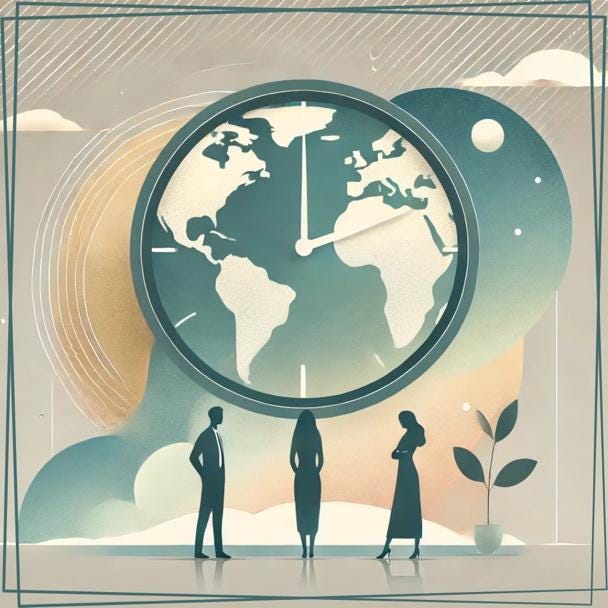
El futuro de la moda sostenible no depende exclusivamente de las marcas y gobiernos, sino también de la determinación individual de los consumidores. Desde buscar información activamente hasta exigir transparencia y apoyar iniciativas sostenibles, cada decisión cuenta. Dejar de esperar y empezar a actuar es el primer paso para transformar la industria textil y de la moda en una más ética y responsable y las redes sociales, cuando se usan de manera estratégica y fundamentada, pueden ser una de nuestras mejores aliadas en este camino; no sólo para denunciar y presionar, sino también para educarnos, compartir información valiosa y construir una comunidad consciente y comprometida con el cambio.
La pregunta es: ¿te quedas esperando o tomas acción?
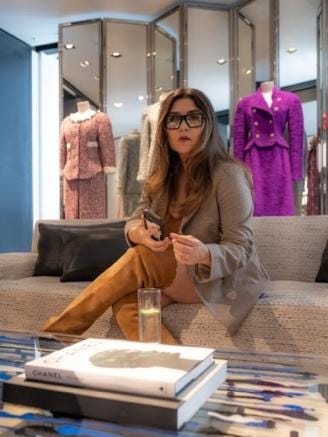 .
.
Alicia Mares, Corresponsal
de Negocios y Moda en México
y Latinoamérica para
Fashion Network
Cecilia Manzur, Diseñadora
, Modelista de Vestuario y
Asesora de Imagen, Chil
Alfonso Martínez Equihua
Director General de Industrias
Marves y Co Fundador de re.colecto
Por: Silvia Jiménez de la Mora, Consultora en Imagen y Guardarropa Sostenible, AICI CIC,
Directora del Comité de Sustentabilidad para AICI Global.
English
From Passivity to Action: How Can Consumers Demand More Responsible Fashion?
By: Silvia Jiménez de la Mora, Image and Sustainable Wardrobe Consultant, AICI CIC,
Director of the Sustainability Committee for AICI Global.
Every day, we are bombarded with information about the environmental, social, and cultural crisis in the fashion industry. But are we really taking action or simply waiting for brands and governments to do it for us? It’s not just about buying less or recycling more, but about becoming agents of change who demand accountability and transparency. To better understand how we can do this, we interviewed three industry experts: Cecilia Manzur, Costume Designer, Modeler, and Image Consultant, Chile; Alicia Mares, Fashion Business Correspondent in Mexico and Latin America for Fashion Network; and Alfonso Martínez Equihua, CEO of Industrias Marves and Co-Founder of re.colecto.
Through their perspectives, we reiterate key strategies that every consumer can implement to drive real transformations in the industry.
Stop Waiting for Information: The Power of Knowledge
Cecilia Manzur emphasizes that one of the first steps to generating change is to stop waiting for information to come to us. As consumers, we must actively seek out data about brands, production processes, and sustainability. Asking stores about their recycling or manufacturing policies not only gives us tools to make better decisions, but also pressures companies to be more transparent.
Based on her experience as an image consultant, Cecilia also highlights that teaching others about responsible consumption, selecting quality garments, and exploring options, such as secondhand clothing, can make a difference. As a designer, she believes that change must also come from the industry, designing collections with sustainable materials and more ethical production processes.
On the other hand, Alfonso tells us that “consumers have much more power and responsibility in the fashion industry than they think. Every purchase sends a message to the market, and big brands are listening.”
Social Media: A Tool for Change?
Alicia Mares reminds us that in the digital age, consumers have unprecedented power. Previously, social movements required marches and protests; today, “it’s no longer word of mouth, it’s publication after publication,” she tells us. However, she warns that this power must be used responsibly. Misuse of information can discredit genuine efforts and divert attention from the real problems.
She also tells us that in addition to being a tool for denunciation and pressure, social media also functions as an inexhaustible source of information and knowledge. Now, through our social networks, we can question brands, share information about events and initiatives, and support sustainable projects, which leads consumers to make more conscious purchases. The key is to filter information, verify sources, and share content that truly adds value to the conversation, which will generate transformation.
He also tells us that the spread of campaigns, initiatives, consumer testimonials, etc. has proven to be a driver of change in the industry. When a brand is called out for unethical practices, media pressure can force it to modify its processes. But similarly, when a company implements responsible policies, consumers can amplify that message, generating demand for products and services aligned with sustainability; “a simple click can make a huge difference,” Alicia tells us.
Similarly, she highlights the importance of actively participating, for example by extending the lifespan of our clothes through repairing, recycling, and buying secondhand clothing. This not only reduces the environmental impact but also sends a clear message to the industry about the growing demand for sustainable alternatives. In this regard, Alfonso explains that re.colecto provides a much lower-impact opportunity to discard our clothes and presents the opportunity to give them a second life.
Transparency: The Missing Link between Consumers, Governments, and Brands
Both Cecilia and Alicia agree that the lack of transparency and communication from governments and brands hinders progress toward sustainable fashion. Cecilia tells us about Chile’s Extended Producer Responsibility Law (REP), which incentivizes companies to implement more responsible practices, giving them additional points in bidding processes and promoting waste collection. Alicia also shares about initiatives such as the “Original” fair, which supports artisans, and Mexico’s ban on animal testing for cosmetics. These are important advances, but their limited publicity means they go unnoticed.
Similarly, Alfonso stipulates that “in Mexico, there is still a long way to go in regulations that encourage a more sustainable textile industry. He tells us that “there is talk of extended producer responsibility,” but that “consumer co-responsibility is also key” and that “the solution lies not only with brands or governments: it lies in greater awareness about how we choose, use, and dispose of our clothing.”
Furthermore, he tells us that by demanding transparency in responsible production and the use of more durable materials, brands will continue to listen and there will be a greater positive impact.
If governments and brands were more open and transparent about their projects, actions, and policies, greater awareness would be generated among consumers. Effective and transparent communication would not only allow people to make better decisions but would also encourage more companies to adopt sustainable practices, Alicia comments. Alfonso adds that “if there were more clear information about regulations and responsible practices, from both governments and brands, consumers could make better decisions.” He tells us that “transparency generates trust and commitment.”
The Most Urgent Request for Brands and Governments
If they could ask for a single immediate action, Cecilia, Alicia, and Alfonso have clear requests. Cecilia points out the need to regulate the import of textiles from the north, since, as is well known, tons of clothing end up in desert landfills without any control. Implementing stricter regulations in this regard would demonstrate a true government commitment to sustainability.
Alicia, on the other hand, emphasizes that the key is transparency. If brands and governments don’t communicate what they are doing (or what they aren’t doing), consumers are left in the dark, without the tools to demand real improvements.
For Alfonso, the push toward a way of working where producers and consumers actively participate in the circular economy is essential, and he emphasizes that “it’s not enough to produce better; we must also consume better and reduce waste.”
Don’t Wait for Change, Be the Change
The future of sustainable fashion depends not only on brands and governments, but also on the individual determination of consumers. From actively seeking information to demanding transparency and supporting sustainable initiatives, every decision counts. Stopping waiting and starting to act is the first step toward transforming the textile and fashion industry into a more ethical and responsible one. Social media, when used strategically and thoughtfully, can be one of our greatest allies on this path; not only to expose and pressure, but also to educate ourselves, share valuable information, and build an aware community committed to change.
The question is: do you wait or do you take action?
Habi Philippine Textile Council (Habi) took a significant step to partner with Fashion Revolution Philippines (Fash Rev PH). They aim to promote sustainable and ethical fashion. They partnered for a series of engaging workshops during the Habi Market Fair. The event took place from October 18th to 20th, 2024, at the Glorietta Activity Center in Makati City. It highlighted the incredible talent of Filipino weavers. The beauty of natural textiles was also showcased. Additionally, the importance of supporting local brands was emphasized.
This partnership marked a first for Fash Rev PH. It merged their passion for ethical fashion with Habi’s dedication to preserving and promoting the heritage of Philippine textiles. The workshops were vibrant with creativity. They offered a unique opportunity for attendees to immerse themselves in the world of weaving. Additionally, they promoted sustainable practices.
The event kicked off with a captivating introduction to the art of weaving, led by Twinkle Ferraren. Participants experienced the joy of creating something with their own hands. This fostered a sense of accomplishment. It also sparked a creative fire within each attendee.
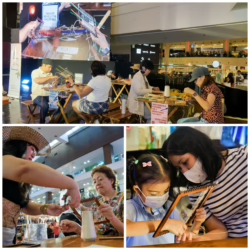
On the second day, Ili Likahaan led a mesmerizing Botanical Eco-printing workshop. Participants discovered the magic of transforming natural textiles using flowers and the rhythmic beat of hammers. This experience was not just about creating beautiful bandannas. It was a journey towards mindful crafting. It also served as a stress-relieving creative outlet.
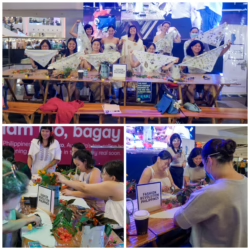
The final day of the workshops showcased the diverse facets of textile artistry. Hiwaga Hands taught participants the art of visible mending. They used techniques like patchwork, embroidery, and sashiko. These techniques breathe new life into fabrics. Meanwhile, The Art of Yarn introduced children to the world of weaving. They used a small loom. This offered a valuable lesson in the craftsmanship and dedication of local weavers.
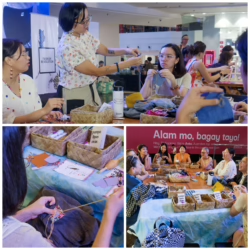
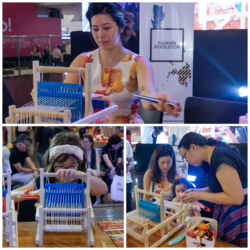
The workshops were a resounding success. Participants gained newfound skills. They also developed a deeper appreciation for the textiles they wear. Additionally, they established a connection to the rich heritage of Filipino weaving. This success demonstrates the power of collaboration. It highlights the growing movement towards conscious consumerism and ethical fashion in the Philippines. The success of this event is a beacon of hope. It inspires others to embrace sustainable fashion choices. It also encourages support for the talented artisans who bring these beautiful textiles to life.
On May 19th, 2024, Rizal Park Luneta transformed into a vibrant canvas of culture and eco-consciousness. The National Parks Development Committee (NPDC) joined forces with Fashion Revolution Philippines, SoFA Design Institute, and Urban Sketchers Manila to present a unique Flores de Mayo celebration: Fashionista Flores de Mayo.
This exciting event wasn’t just about religious devotion or showcasing stunning gowns. It was a beautiful fusion of tradition and environmental awareness. SoFA design students presented modern Filipiniana gowns and suits, all crafted with sustainability in mind.
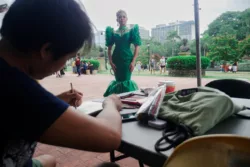 The festivities began at 5:00 pm, with Urban Sketchers Manila capturing the elegance of the “Reinas” (Queens) in their one-of-a-kind attire. As the day unfolded, the Santacruzan parade filled the air with a celebratory energy, snaking its way through the Central Section of Rizal Park.
The festivities began at 5:00 pm, with Urban Sketchers Manila capturing the elegance of the “Reinas” (Queens) in their one-of-a-kind attire. As the day unfolded, the Santacruzan parade filled the air with a celebratory energy, snaking its way through the Central Section of Rizal Park.
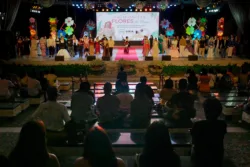
The highlight of the evening was the Santacruzan fashion show, held at the Open-Air Auditorium. Here, the public witnessed a modern interpretation of the Santacruzan tradition, where sustainable fashion took center stage.
But the sustainable fashion movement didn’t end there. From May 21st to 26th, an exhibit titled “Modern Filipin(ian)a: Reimagining Santacruzan Gowns” took place at The Gallery of Rizal Park Luneta. Visitors were invited to get a closer look at the eco-conscious gowns, sparking conversations about responsible fashion choices.
The Fashionista Flores de Mayo was a resounding success. It proved that cultural celebrations and environmental consciousness can go hand in hand, paving the way for a more sustainable future for fashion in the Philippines.
The new year is a great time to set personal goals, reflect on the changes you want to make in your life and commit to making a positive impact on your wellbeing, the environment and your community. We may not be able to solve fashion’s BIG problems on our own. But every small step matters. Whether you want to transform your own shopping habits, learn some practical skills or take part in local community action, below you can find 24 ideas for fashion resolutions to set for 2024.
1. Learn to sew
Have you always wanted to make your own clothes? Now is the time to learn! Making your own clothes has many benefits; you form a connection with the item meaning you’re more likely to care for it properly and keep it for longer, you engage in slow fashion by making something to last and avoiding microtrends, and you gain a deeper understanding of how clothes are made which helps you value them more.
2. Enrol on our online course
Want to learn more about sustainability and fashion, but aren’t sure where to start? Our free online course with Future Learn is the perfect introduction to sustainable fashion. You can enrol in the free 4 week course here.
View this post on Instagram
3. Learn basic mending and repair techniques
Basic mending skills go a long way to help you make the clothes you love last that bit longer. In our culture of disposability, repairing our clothes is a revolutionary act; say no to throw away fashion this year and learn to mend!
4. Care for your clothes properly
Do you find yourself shrinking your favourite jumper or fading your graphic t-shirts? Make a conscious effort this year to learn how to care for your clothes properly. Always read the care label before washing your clothes and take time to follow the recommendations given – your clothes will thank you for it!
5. Join your local Fashion Revolution team
Are you looking for a community of like-minded people to collectively take action with, to transform the fashion industry? Your local Fashion Revolution team is a great place to start! With teams in over 75 countries worldwide, you can connect with the movement wherever you are. Find your local country team here.
Can’t find a team in your area? Get in touch to express your interest in forming a voluntary team in your local community.
6. Challenge yourself to only buy second hand items this year
Shopping second hand is one of the best ways to reduce your environmental impact and keep pre-loved clothes in circulation for longer. Platforms like Vinted, Depop and Ebay make it easier than ever to refresh your wardrobe in a more sustainable way. This year, challenge yourself to embrace thrifting and only buy second hand items. You’ll be surprised at the hidden gems you can find in a charity shop!
7. Support or join a grassroots organisation
Want to really make an impact in 2024? Look out for local volunteer opportunities with grassroots organisations working on the ground to improve the conditions for the people who make our clothes.
8. Learn how to knit or crochet
Pick up a new skill and learn to knit or crochet this year. Like sewing your own clothes, engaging with crafts like knitting and crochet helps build a closer connection to your wardrobe and makes you appreciate the time and skill that goes into making uour favourite knitwear. From jumpers, skirts and dresses to handbags, hats and scarves, the options for a new creative project are endless!
9. Read a book on sustainable fashion
Reading more books is a common New Year’s resolution, so why not add a book on sustainable fashion to your 2024 reading list? Some recommendations from the Fashion Revolution team include:
The Anti-Capitalist Book of Fashion by Tansy Hoskins
10. Shop from your own wardrobe first
Do you want to try and curb your consumption? Make it a habit to shop from your own wardrobe before you go out and buy anything new (or new to you!). Regularly reminding yourself of what you already own can help prevent unnecessary purchases. Get creative and experiment with what you have. Remember: the most sustainable garment is the one already in your wardrobe.
11. Prioritise longevity and invest in timeless pieces
When you absolutely have to buy something brand new, prioritise longevity and invest in timeless pieces that will last a lifetime. Before clicking checkout, be honest and ask yourself if the item you’re buying aligns with your personal style or if it’s just a microtrend. Only buy something you can see yourself wearing time and time again, for years to come.
12. Stop giving in to impulse buys
Do you often find yourself splurging on trendy new items that soon lose their sparkle and end up discarded at the back of your wardrobe? You might be impulse shopping. It’s a tricky habit to break but there are ways to manage it: Always give yourself at least 24 hours to think about a purchase before you commit to buying it and unsubscribe from brand emails to avoid marketing tactics that create a false sense of urgency.
13. Try a no new clothes challenge
If you really want to challenge yourself in 2024, try to avoid buying any clothes at all! Many people already own more than enough clothes, with the majority of them hardly ever being worn. WRAP found that the average UK adult has 118 items of clothing in their wardrobes – 26% of which were unworn for at least a year.
View this post on Instagram
14. Do a closet audit & clear out consciously
Starting the new year with a closet audit is a great way to take stock of what you already own and bring old pieces back into circulation. Making a note of what’s hidden in your wardrobe can help you shop more consciously, ensuring new pieces pair with existing items and avoiding duplicates. If you do decide to dispose of any items, please do so responsibly.
15. Become a proud outfit repeater
Your clothes deserve to be worn more than once! Banish the stigma and become a proud outfit repeater. When you put together an outfit that makes you feel great, snap a photo to refer back to. Soon you’ll have a catalogue of your favourite fits and you’ll never again be left with “nothing to wear”!
16. Normalise borrowing clothes from friends and family
Practise circular fashion principles this year and borrow clothes from your friends and family members. Next time you need a new outfit for an event or special occasion, see if your friends can lend a hand before hitting the shops. This can be especially helpful if you’re participating in a no new clothes challenge – just remember to ask first…
17. Give rental a try
Continuing the theme of circular solutions, try renting! Renting clothes is a great way to experiment with new styles and impress at special occasions without breaking the bank. As renting gains popularity, there are plenty of platforms to explore, including; By Rotation, Hurr and Wear My Wardrobe Out.
18. Support garment workers by signing petitions and donating to organisations on the ground
Show up for the people who make our clothes by engaging with campaigns that are fighting for fair pay and better working conditions. Stand in solidarity by signing petitions, spreading the word on social media and donating to organisations on the ground.
View this post on Instagram
19. Hold brands accountable by using social media and email
Engage in online activism and hold brands accountable by asking questions like #WhoMadeMyClothes and #WhatsInMyClothes. It’s bad business for brands to ignore their customers, so make your voice heard and demand better in 2024!
20. Talk to friends and family members about sustainable fashion
At Fashion Revolution we believe that change starts with a conversation. One of the simplest ways we can begin to transform the fashion system is by talking to our friends and family members about sustainable fashion. Talking about the issues you care about can help raise awareness and inspire the people in your life to take action with you.
21. Support small businesses and buy from sustainable, ethical brands
When buying something new, take your time to discover small businesses you may not have heard of before and look for brands that are committed to sustainable, ethical production. By supporting independent businesses, you are investing in communities rather than corporations, and contributing to a fair fashion system.
On the lookout for ethical fashion brands? Good On You’s brand directory can help you make more informed choices.
22. Wash your clothes less
Did you know that most people are washing their clothes way too often? For example, it’s recommended to wash your jeans after every 10 wears; however, the average UK consumer washes their pair after just 2.5 wears. Overwashing our clothes not only has an impact on the environment (high energy and water usage), it also impacts our clothes too by wearing down the fabric too quickly and reducing their lifespan.
23. Stop buying single use items
Fancy dress and flashy festival clothes are lots of fun, but unfortunately most of these garments are made of polyester and are destined to end up in landfill after the main event. Before buying something you expect you’ll only wear once, try and think of a sustainable alternative; could you find this item secondhand? Maybe a friend has something similar you could borrow? Can you make do with what you already own?
24. Sign our Manifesto!
Join over 15,000 other fashion revolutionaries as we collectively fight for a fair, safe, clean, transparent and accountable fashion industry in 2024 and beyond. Start the new year by committing to our vision of a fashion industry that values people and planet over profit by signing our Manifesto.
Header photo by Tim Mossholder on Unsplash
Míg a divatbemutatók önmagukban az iparág környezeti hatásának csak egy kis töredékét teszik ki, Rachel Arthur szerint a divatbemutatók a bolygót károsító túlfogyasztást tápláló marketinggépezet középpontjában állnak.
Racher Arthur tanácsadó, író és az ENSZ Környezetvédelmi Programjának fenntartható divatért felelős vezetője és az ő cikkét adjuk közre magyar fordításban.
Az elmúlt hetekben a divatszakma visszaáramlott Párizsból, a luxusipar kétévente megrendezésre kerülő női divathét utolsó és legpompásabb állomásáról.
Vásárlók, hírességek és influencerek százai repültek oda benzinfaló repülőjáratokon, hogy egy pillanatra bepillantást nyerjenek az új kollekciókba, amelyeket gondosan megmunkáltak egy olyan elavuláshoz, amely azt jelenti, hogy mindenki hajlandó lesz újra repülőre ülni, és hat hónap múlva újra megismételni az egészet.
Az biztos, hogy az ezekkel a nagyszabású marketing pillanatokkal közvetlenül összefüggő kibocsátások és hulladékok csepp a tengerben az iparág teljes lábnyomához képest. Az évek során a márkák és a divattanácsok erőfeszítéseket tettek mindkettő csökkentésére.
A bemutatók közvetlen hatására való kizárólagos összpontosítás azonban figyelmen kívül hagyja a nagyobb képet: a divat negatív környezeti és társadalmi hatásának középpontjában a túltermelés és a túlfogyasztás áll. És mit tesznek a divathetek, ha nem mindkettőt táplálják? Vegyük csak a közelmúltbeli New York-i, londoni, milánói és párizsi rendezvények sorát, nem is beszélve a gyakran túlzó módon megrendezett és elő-őszi kollekciókról – minden egyes bemutató beindít egy marketinggépezetet, amelynek célja az új termékek vásárlásának ösztönzése. Az események által inspirált trendek, az általuk biztosított médiaérték és végső soron a vásárlás, amelyre mindezek ösztönöznek, táplálják a környezeti hatásukat.
Ez a divatbemutatók úgynevezett “agylenyomata”: a kifutón való megjelenésnek a fogyasztásra gyakorolt hatása.
“Ha a lábnyomod a működésedet írja le, akkor az agynyomod azt írja le, hogy az embereket milyen érzésekkel töltöd el. Ez az Ön kulturális lenyomata” – mondta Lucy Shea, a Futerra változási ügynökség csoport vezérigazgatója.
A divatbemutatókra költött milliók nem csak a kifutó kollekciók értékesítését mozdítják elő, hanem a szomszédos és könnyebben hozzáférhető termékek – a táskáktól az illatokig – sokkal szélesebb körű fogyasztását ösztönzik, valamint a tömegpiaci másolatok iránti keresletet is.
A reklámipar felismerte ezt a dinamikát. A Purpose Disruptors, egy korábbi reklámszakemberekből álló szervezet, amelynek célja az éghajlatváltozás katalizálása, bevezette a reklámozott kibocsátás fogalmát, amely a kampányok által generált forgalomnövekedés mérésére utal. Ez azt mutatja, hogy a reklámok 32 százalékkal növelik az Egyesült Királyságban minden egyes ember éves szén-dioxid-kibocsátását.
Talán szükségünk lenne egy ezzel egyenértékű elszámolási folyamatra a divatmarketing számára. Nevezzük el “trendkibocsátásnak” – egy olyan mód, amellyel mérhető a luxus imázsépítés által vezérelt fogyasztás hatása.
Ez azért fontos, mert a divat csak akkor fogja elérni fenntarthatósági céljait, ha csökkenti az eladott termékek mennyiségét. De a luxus agynyomása – a divatbemutatóktól kezdve a szerkesztőségi fotózásokig, reklámkampányokig és influencer posztokig, amelyeket elősegítenek – jelenleg az ellenkezőjére ösztönöz, arra buzdítva a vásárlókat, hogy vásároljanak a villámgyorsan változó trendeknek
Ezt az ENSZ Környezetvédelmi Programja és az ENSZ Éghajlatváltozással foglalkozó szervezete a Fenntartható divatkommunikációs útmutatóban (Sustainable Fashion Communication Playbook) https://www.unep.org/interactives/sustainable-fashion-communication-playbook/ állapította meg. Ez egy felhívás a túlzott fogyasztás üzeneteinek felszámolására, beleértve a hagyományos divatbemutatókat is, és ehelyett a fenntartható fogyasztás irányába kell terelni az erőfeszítéseket.
Ennek nem kell a divathetek halálát jelentenie – ahogyan a fenntartható divatágazat sem követeli meg a divat teljes megszűnését. De mindkettő radikális változást igényel.
Az olyan bemutatók, ahol milliókat költenek a gazdagság pillanatnyi és extravagáns fitogtatására (mindezt azért, hogy a kapcsolódó márka- és médiaértékből további milliókat nyerjenek vissza), nem aktuálisak egy olyan időszakban, amikor iparágként hozzájárulunk a bolygórendszerek eróziójához, amelyektől a túlélésünk függ, és eközben emberek millióit sújtjuk, főként a fejlődő országokban.
Ez áll a középpontjában annak, hogy Amy Powney, a fenntarthatóságra összpontosító Mother of Pearl luxusmárka kreatív igazgatója miért nem tart többé divatbemutatókat.
“Az éghajlati összeomlás idején ez durvának és szükségtelennek tűnt” – mondta. Ehelyett arra kellene használnunk az ilyen alkalmakat, hogy támogassuk és ünnepeljük azokat, akik megmutatják, hogy másképp is lehet.
A koppenhágai divathét az alternatív megközelítés egyik példája: A tervezőknek 2023-tól 18 konkrét fenntarthatósági követelménynek kell megfelelniük ahhoz, hogy bemutatót tarthassanak. Többek között nem szabad megsemmisíteniük a korábbi kollekciók eladatlan ruháit, a bemutatott ruhák legalább felének jobb anyagokból kell készülnie, és a márkáknak vállalniuk kell, hogy platformjaikat a vásárlók oktatására és tájékoztatására használják a fenntarthatósági gyakorlatukról. Bár van még hova fejlődni, más nagyvárosokkal összehasonlítva ez egy nagy nyilatkozat.
Most azokra van szükségünk, akik ismét nagyobb léptékben gondolkodnak arról, hogyan mutassuk be a divattal való kapcsolat új módjait. Végül is ez már nem a fokozatos változás ideje. Az átalakulást fel kell turbózni, új rendszereket és üzleti modelleket kell kifejleszteni – olyanokat, amelyek nem arra épülnek, hogy egyszerűen egyre több és több új dolgot adnak el, és nem gondolnak az emberekre, a bolygóra, sőt a profitra gyakorolt hosszú távú hatásokra. A divatbemutatók újragondolása ennek része.
A divat maga is felismerte a változás szükségességét. A világjárvány idején az iparágon belül egyre többen kérték, hogy reformálják meg a divathetek könyörtelen forgását, ami a független tervezők számára pénzügyileg bénító lehet.
Ahelyett, hogy a platformok egy elavult, elromlott rendszert táplálnának, a divatheteknek lehetőséget kellene adniuk egy új rendszer elképzelésére. A márkáknak arra kellene használniuk őket, hogy rávilágítsanak a megoldásokra, valamint hogy felemeljék és ösztönözzék a tudatos fogyasztás körüli törekvéseket. Erre már vannak példák. Az idei szezonban Párizsban Stella McCartney a kifutón tartott bemutatóját az alacsonyabb környezeti terhelésű anyaginnovációk piacával egészítette ki. New Yorkban Maria McManus tervező a bemutató végeztével a közönséggel együtt végigvezette, hogyan készültek az egyes darabok a fenntarthatóság jegyében.
Ünnepeljük azokat is, akik a körforgásos megoldásokat helyezik előtérbe; azokat, akik a hulladékot erőforrássá alakítják, és arra ösztönzik a fogyasztókat, hogy szeressenek bele az olyan fogalmakba, mint a használt és újrahasznosított divat. Egy párizsi divathét csereboltja, amelyben a szokásos első soros versenyzők is részt vennének, nem csak hatalmas nyilatkozat lenne, hanem talán az egyik legnagyszerűbb divatbemutató, amelyet a mai divatipar valaha is látott.
Itt van egy kreatív lehetőség arra, hogy az ember használja az agylenyomat erejét, és új utat kovácsoljon. Bár a kreativitást nem szabad korlátozni, azt feltétlenül át kell irányítani.
Did you miss some of the events that we got involved in this month? Not to worry, here is what we did early this October.
Fashion Revolution Philippines (FashRevPH) marked the World Circular Textile Day with a series of events. World Circular Textile Day is celebrated each year on October 8 but one day was not enough for this year 2023.
Exhibit and Bazaar at Eastwood Plaza
FashRevPH joins an exhibit and bazaar at Eastwood Plaza in Quezon City with WearForward and Restore. The event featured a well-curated selection of sustainable fashion brands, a clothing swap party with free consultation on sustainable fashion practices, and a showcase of upcycled pieces from Jan Paul Martinez, a local fashion designer. This activity ran from October 6 to October 10.
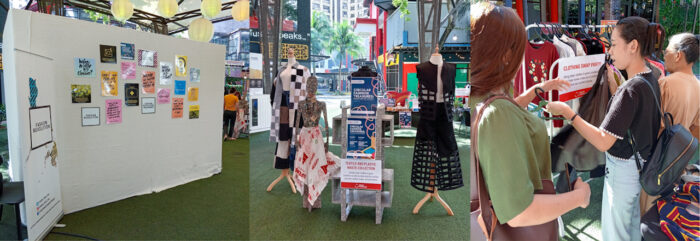
The Challenges and Opportunities in Textile Waste
Tere Arigo, FashRevPH Country Coordinator, facilitated the virtual panel discussion titled “Closing the Loop: Navigating the Challenges and Opportunities in Textile Waste.” Top industry figures from diverse backgrounds joins the panel discussion. The panel started off with FashRevPH spokesperson Prince Jimdel Ventura of WearForward followed by Noreen Baustista the co-founder of Panublix, joined with her is a fashion educator and sustainable designer Irene Subang, with a professional wardrobe stylist and author of Always Be Chic Miss KC Leyco and lastly Lester Dellosa an environment activist who is also the founder and creative director of CICCADA.
The time for discussion of environmental and economic challenges posed by textile wastes in the Philippines was not enough. It included the innovative solutions that can transform these issues into opportunities for circular fashion materials, processes, business models, products, services, and consumption were too broad to talk about in just an hour.
Capacity Building Workshop on Textile Circularity
FashRevPH collaborated with MakeSense Philippines in a Capacity Building Workshop on Textile Circularity on October 13, 2023. The workshop was held at BSA Twin Towers in Ortigas Center, Mandaluyong City.
FashRevPH participated in the workshop to talk about local textiles and sustainable fashion with Mr Ventura as part of the panel in the first part of the program. The organization guided the design of one of MakeSense’s capacity-building workshops in partnership with the United Nations Development Programme (UNDP).
FasRevPH’s Commitment to Sustainability
FashRevPH is committed to promoting sustainable fashion in the Philippines. The organization works to educate consumers about the impact of their fashion choices and to encourage them to support a more sustainable approach.
Manila, Philippines – The Fashion Revolution Philippines commemorates the victims of the Rana Plaza factory collapse in Bangladesh, in alignment with the Fashion Revolution week held globally. The Rana Plaza factory collapse killed 1,138 textile workers and injured more people became an eye-opener to the world on 24 April 2013. The incident drove the Fashion Revolution movement to push for labor rights transparency and sustainability in the fashion world.
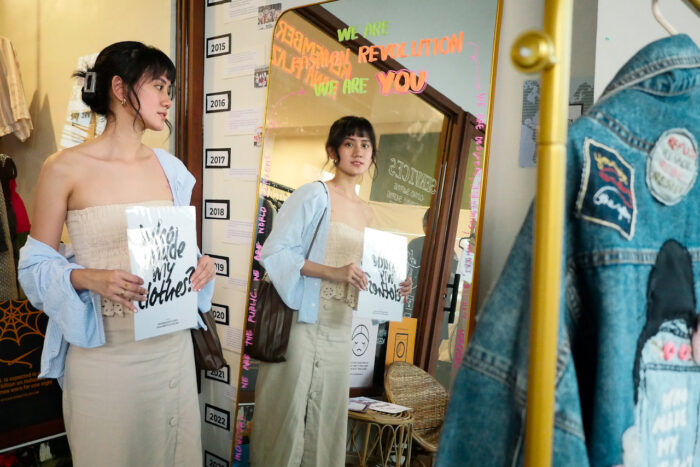
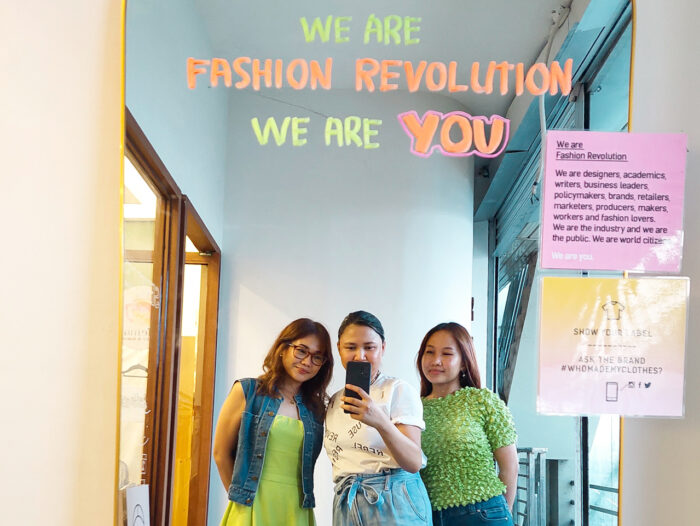
The Fashion Revolution Philippines’ first in-person event held for two days since the pandemic started. The two-day event happened in Moda Laya in commemoration of the 10 anniversary after Rana Plaza disaster. Attendees participated in activities such as clothes swapping, panel discussion with the experts and the screen showing of two documentary films.
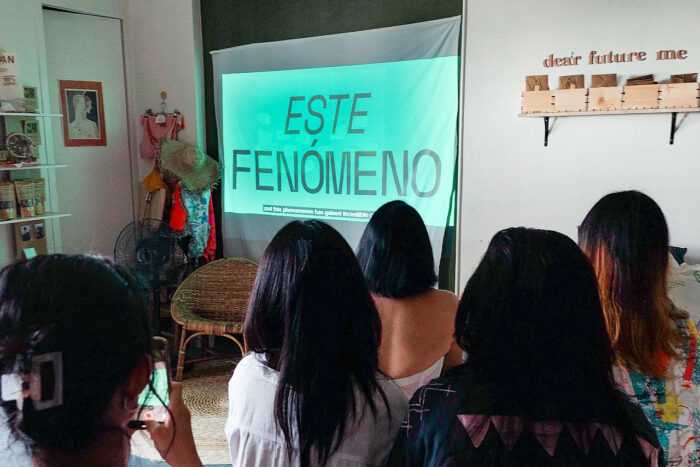
The “Se Abrió Paca,” a film made by the Fashion Revolution Guatemala, gave a heartfelt discussion among its viewers just after it was shown with the “True Costs” documentary and the power outage on the first day. Activities on the next day went well with the clothes swapping and panel discussion. Prince Ventura leads the panel discussion with Bianca Gregorio, owner of Moda Laya and founder of Re-clothing, Irene Subang, sustainable fashion designer and educator, and Jamie Naval, founder and CEO of Twenty Kids and Barrio Studios. Our guest experts discussed that the society today needs to focus on the importance of sustainable practices and a circular wardrobe.
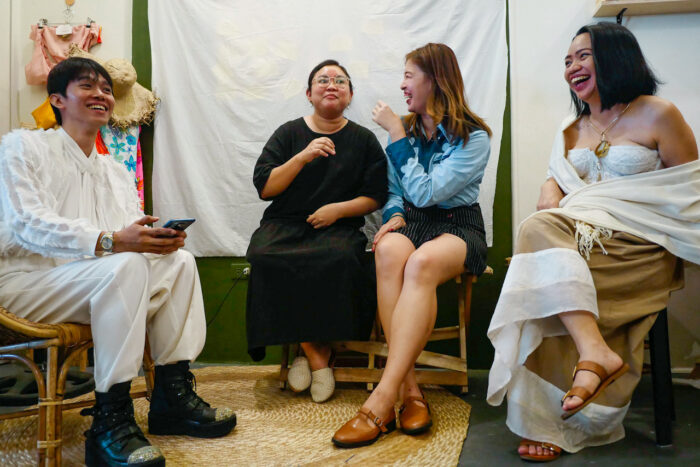
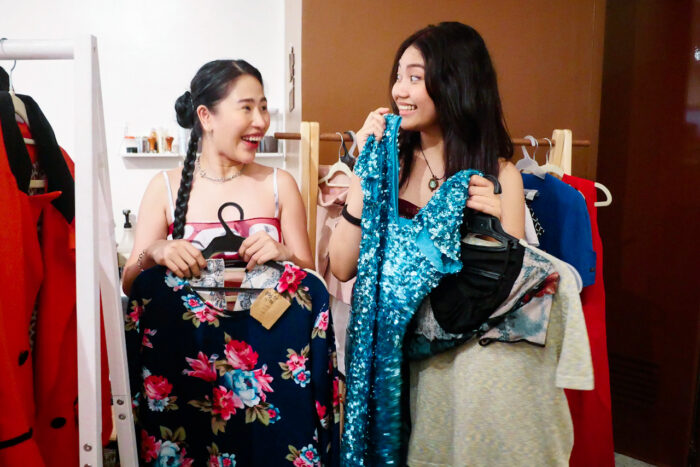
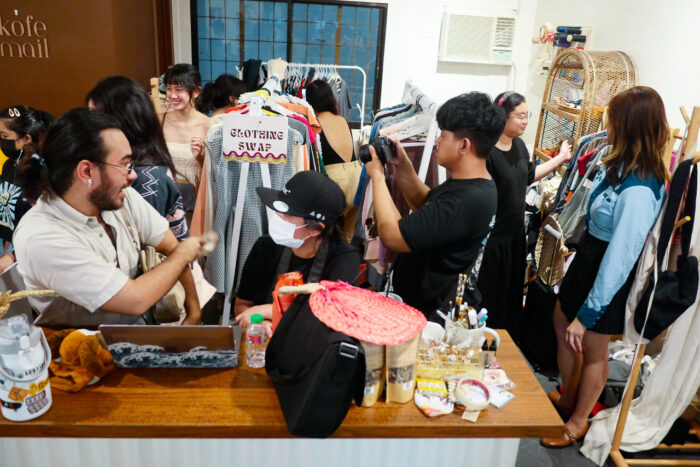
Fashion Revolution Week is our annual campaign bringing together the world’s largest fashion activism movement for seven days of action. It centres around the anniversary of the Rana Plaza factory collapse, which killed around 1,138 people and injured many more on 24 April 2013.
This year, as we marked the tenth anniversary of the Rana Plaza factory collapse, we remembered the victims, survivors and families affected by this preventable tragedy and continue to demand that no one dies for our fashion. To define the next decade of change, we translated our 10-point Manifesto into action for a safe, just and transparent global fashion industry. Our campaign platformed the work of our diverse Global Network who provided local interpretations of their chosen Manifesto point(s). We believe that while fashion has a colossal negative impact, it also has the power and the potential to be a force for change. Together, we expanded the horizons of what fashion could – and should – be.
Here, catch up on some of the week’s highlights and find out how to stay involved with our work, all year round.
Remembering Rana Plaza
Fashion Revolution Week happens every year in the week coinciding with April 24th, the anniversary of the Rana Plaza disaster. On April 24th 2013, the Rana Plaza factory building in Bangladesh collapsed in a preventable tragedy. More than 1,100 people died and another 2,500 were injured, making it the fourth largest industrial disaster in history. On April 24th, we paused all other campaigning to pay our respects to the victims, survivors and families affected by this tragedy, and came together as a global community to remember Rana Plaza.
As we reflect a decade on, we are inspired by and celebrate the progress made in the Bangladesh Ready-made Garment (RMG) sector by the Accord. The International Accord on Fire and Building Safety was the first legally-binding brand agreement on worker health and safety in the fashion industry and is the most important agreement to keep garment workers safe to date. This year, we pay tribute to the joint efforts of all Accord stakeholders who have significantly contributed to safer workplaces for over 2 million garment factory workers in Bangladesh, including the Bangladeshi trade unions representing garment workers, alongside Global Union Federations and labour rights groups. We welcome the introduction of the Pakistan Accord and would like to see the adoption and success of the International Accord replicated in all garment producing countries.
Manifesto for a Fashion Revolution
Our theme for Fashion Revolution Week 2023 was Manifesto for a Fashion Revolution. Back in 2018, we created a 10-point Manifesto that solidifies our vision to a global fashion industry that conserves and restores the environment and values people over growth and profit. This year we called on citizens, brands and makers alike to sign their name in support of turning these demands into a reality, boosting our signature count to 15,500 Fashion Revolutionaries and counting. We are immensely grateful to everyone who has and continues to sign; our power is in our number and each signature strengthens our collective call to revolutionise the fashion industry.
To campaign for systemic change in the fashion industry, we themed the week around complementary Manifesto points, providing ways to be curious, find out and do something daily around each of them. From supply chain transparency to living wages, textile waste to cultural appropriation, freedom of association to biodiversity, we shared global perspectives and solutions to fashion’s most pressing social and environmental problems.
Over the past ten years, the noise around sustainable fashion has only got louder. But meanwhile, real progress is too slow in the context of the climate crisis and rising social injustice. That’s why Fashion Revolution Week 2023 was an action-packed and future-focused campaign that amplified the actions and perspectives of Fashion Revolutionaries around the world.
View this post on Instagram
Global Conversations
To capture these global perspectives, we launched the Fashion Revolution Map on Earth Day, which coincided with the start of Fashion Revolution Week. Developed by Talk Climate Change, the Map served as a global forum to reflect on the week’s themes and events, using our Manifesto as a talking point. Fashion Revolutionaries continued the discussion offline by inviting their family, friends, colleagues and classmates to imagine what a clean, safe, fair, transparent and accountable fashion industry would look like with us. These conversations were then recorded on the Map as a source of inspiration and knowledge exchange.
Anyone can be a Fashion Revolutionary; it starts with a simple dialogue about the changes you want to see in the fashion industry. Make your voice heard by contributing to our map today and help change the fashion industry through the power of conversation!
View this post on Instagram
Good Clothes, Fair Pay Highlights
Ten years on from Rana Plaza, poverty wages remain endemic to the global garment industry. Most of the people who make our clothes still earn poverty wages while fashion brands continue to turn huge profits. At Fashion Revolution, we believe there is no sustainable fashion without fair pay which is why we launched Good Clothes, Fair Pay as part of a wider coalition last July. The Good Clothes Fair Pay campaign demands living wage legislation at EU level for garment workers worldwide, building on Manifesto points 1 and 2.
During Fashion Revolution Week, our EU teams coordinated awareness events, campaigns and marches to mobilise signatures for this campaign. On April 25th, we headed to the European Parliament with Fashion Revolution Belgium to demand better legislation in the fashion industry. The day of action consisted of a panel discussion between Members of the European Parliament and impacted fashion stakeholders, and ended with a stunt outside the Parliament. Fashionably Late highlighted that the EU is running out of time to act on poverty wages in fashion. This stunt was replicated by our teams in Germany, France and the Netherlands throughout Fashion Revolution Week to demonstrate EU-wide solidarity with the people who make our clothes.
We have less than three months left to collect 1 million signatures from EU citizens to push for legislation that requires companies to conduct living wage due diligence in their supply chains, irrespective of where their clothes are made. If you are an EU citizen, sign your name here. If you’re unable to sign, please support the campaign by sharing it far and wide online.
View this post on Instagram
Fashion Revolution Open Studios Highlights
Fashion Revolution Open Studios is Fashion Revolution’s showcasing and mentoring initiative since 2017. Through exhibitions, presentations, talks, and workshops with emerging designers, established trailblazers and major players, we celebrate the people, products and processes behind our clothes.
This Fashion Revolution Week, Fashion Revolution Open Studios joined forces with Small but Perfect to spotlight the work of 28 European SMEs taking part in their circularity accelerator project. Forming part of this European events programme, Fashion Revolution Open Studios held a two-day event in partnership with The Sustainable Angle and xyz.exchange at The Lab E20. The event showcased seven innovative designers from the Small But Perfect cohort of sustainable SMEs and displayed how they are embedding circular solutions into their work, from crafting grape leather handbags to developing community approaches to making and working together. Alongside the exhibition, there were livestreamed webinars, workshops and panel discussions to explore the projects and hear about some of the the challenges facing small businesses and the industry at large in switching to circular business models.
Global Network Highlights
With 75+ teams from all around the world, Fashion Revolution Week 2023 championed the perspectives and contributions of our Global Network. Here are just a small selection of highlights from our country teams:
Fashion Revolution New Zealand unpacked each Manifesto point with industry trailblazers in an Instagram Live series.
Fashion Revolution teams in Bangladesh and Sweden co-organised a virtual panel discussion on shifting consumer behaviour.
Fashion Revolution Singapore celebrated the launch of their digital zine MANIFESTO.
Fashion Revolution teams in Iran and Germany collaborated on Women, Life, Freedom, a joint exhibition.
Fashion Revolution Nigeria shared the stories and journeys of local slow fashion brands.
Fashion Revolution Argentina invited us to join their Wikipedia edit-a-thon.
Fashion Revolution teams in Vietnam, South Africa and Scotland hosted local community clothing swaps.
Fashion Revolution India won the Elle Sustainability Award for Eco-Innovation in Fashion.
Fashion Revolution Uganda brought together the country’s top designers and brands at Kwetu Kwanza.
Fashion Revolution teams in UAE and Canada both held local design competitions for students.
Fashion Revolution Hungary championed the revival of traditional folklore practices in clothing and fashion.
Fashion Revolution USA discussed the fashion industry’s impact on people and planet in a 2-part Zoom series.
Fashion Revolution Uruguay hosted Fashion Celebrates Life, a community picnic themed around Manifesto point 10.
Fashion Revolution teams in Chile and Portugal shared their Fashion Revolution Week highlights with us on Instagram Live.
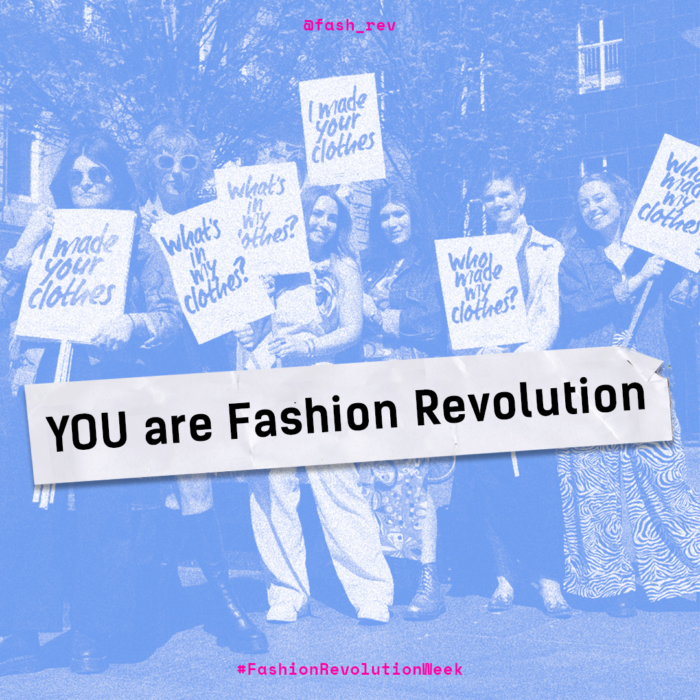
You are Fashion Revolution
We are so grateful to everyone in our community for getting involved in Fashion Revolution Week on social media and beyond. Every single voice makes a difference in our fight for a fashion industry that conserves and restores the environment and values people over growth and profit.
While Fashion Revolution Week 2023 may be over, our community, our campaigning and our movement continues, 365 days a year. Please join us in fighting for systemic change by:
Following us on social media: Stay up-to-date by following us on Instagram, Facebook, Twitter, TikTok, LinkedIn and YouTube, and signing up to our weekly newsletter.
Finding your country team: Connect with the teams in your region by following them online, attending their events and volunteering with them. Find your country team here.
Using our online resources: Our website is a treasure trove of information, from how to guides and online courses to annual reporting on transparency on the fashion industry. Get started here.
From all of us in the Fashion Revolution team, we appreciate your support and we look forward to seeing you next year!
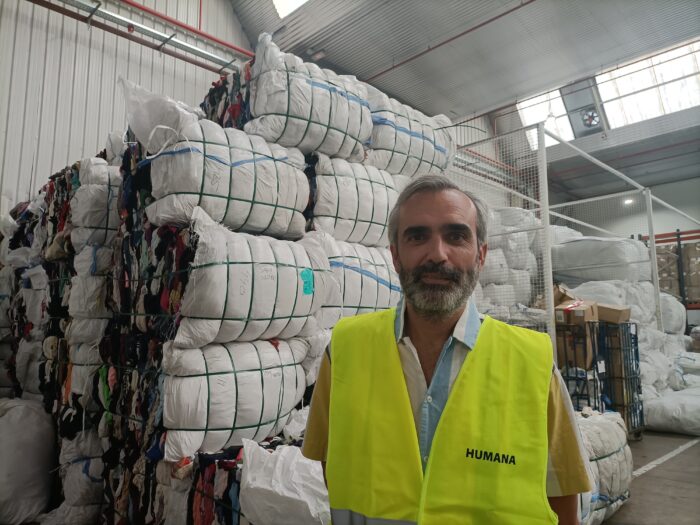
Artículo redactado por Nora Sesmero Andrés, voluntaria de Fashion Revolution.
Humana Fundación Pueblo para Pueblo es una organización sin ánimo de lucro que se encarga del reciclaje del textil en España. Los ciudadanos españoles nos desprendemos al año de 1’2 millones de toneladas de ropa, y eso tiene un gran impacto en el medioambiente.
Si por algo destaca Humana es por ser una organización transparente. En su web podemos encontrar toda la información trazada para que el ciudadano de a pie conozca cómo trabajan.
Esta fundación se dedica a reinsertar en el ciclo de vida las prendas de las que los consumidores nos desprendemos, aunque no dan abasto. De las 1’2 millones de toneladas de prendas que los ciudadanos españoles desechan al año, actualmente solo se recicla un 10%. Otros proyectos en España como Moda re- se dedican también a esta labor.
Humana tiene 5200 contenedores de donación de ropa repartidos por España, promoviendo que los consumidores donemos nuestra ropa cuando creamos que realmente ya no la podemos vestir, aprovechando todo su potencial. En sus plantas de reciclaje de Madrid y Barcelona, donde se puede acudir para conocer cómo trabajan, se observan pilas y pilas de sacas de ropa prensada. Algunas de esas sacas pesan alrededor de unos 400kg.
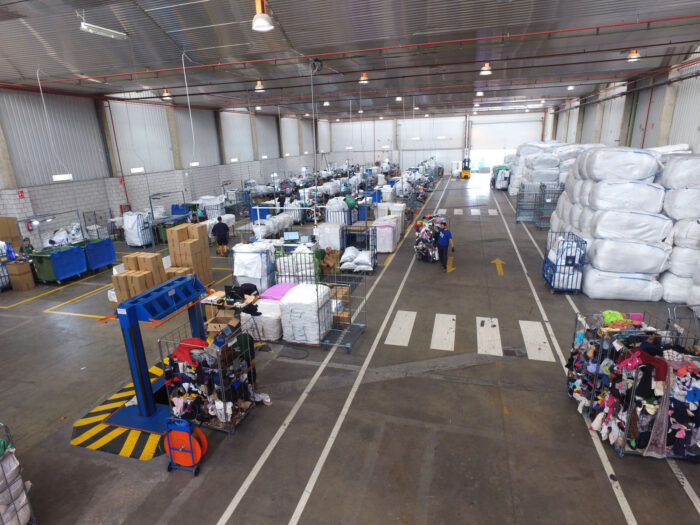
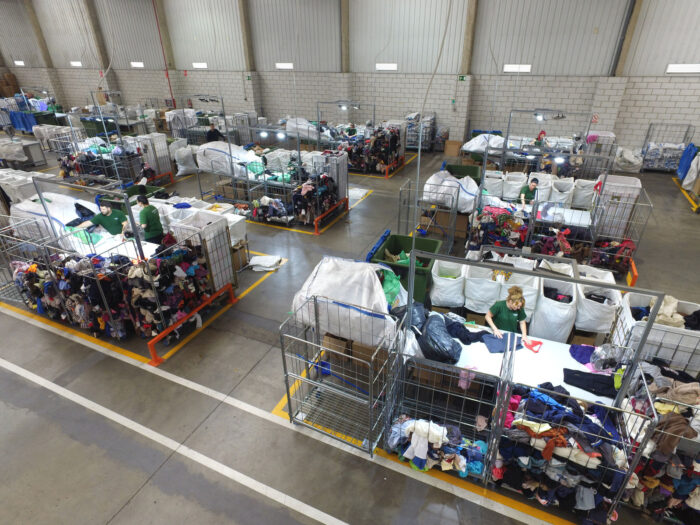
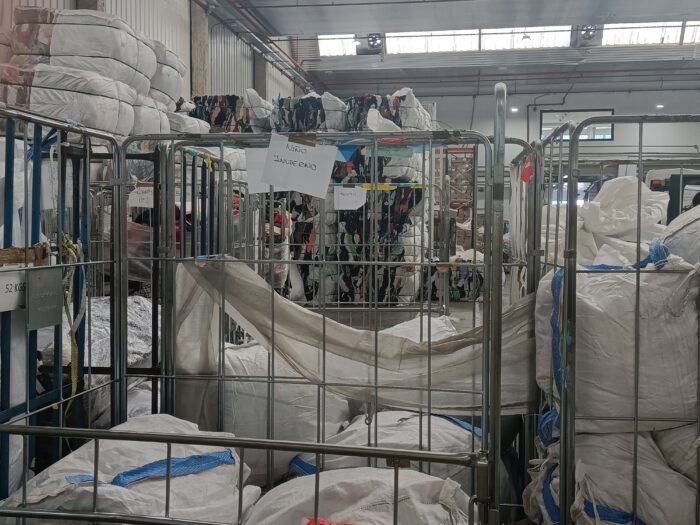
Cuando los ciudadanos dejan sus bolsas de ropa en los contenedores de Humana, estas se transportan a sus plantas de reciclaje y mediante un proceso rápido y efectivo se clasifican según su estado para dotarlas de un nuevo uso. Un 90% de estas son destinadas a la venta de segunda mano tanto en España como en los países donde realizan sus programas sociales.
De esta manera, tratan de fomentar la moda de segunda mano, a partir de la venta de ropa en sus tiendas, donde según muchos de sus clientes, podemos encontrar prendas completamente nuevas. Esto demuestra la mala educación que tiene el consumidor de moda a día de hoy. Por ello, creen que es importante educar a este en la sensibilización, que seamos conscientes del impacto que tienen nuestras compras. “Dado que las calidades de la moda rápida son pésimas, las prendas que se reciclan también son cada vez de peor calidad”, afirma el responsable de comunicación de Humana, Rubén González. La solución pasaría por dejar de consumir este tipo de moda y comenzar a invertir en prendas de calidad.
Parte de los beneficios que esta fundación produce se destinan a realizar proyectos sociales en países del sur, relacionados con la educación, la salud, la agricultura, el cambio climático, el desarrollo comunitario, etc. En países como China, Ecuador, Laos, Malawi, Mozambique, Namibia, Senegal, Zambia y España. En 2020, sus proyectos de cooperación involucraron a cerca de 125.000 personas.
Algunos de los proyectos de educación se encargan de formar a profesores de primaria en el entorno rural, ya que defienden que los profesores bien formados, motivados y comprometidos son la mejor palanca para hacer avanzar la educación. Impulsan la agricultura urbana, ecológica y sostenible, además del desarrollo rural. En el ámbito de la salud, tratan de educar a las personas para prevenir el VIH. En 2021 se ha profundizado en el fortalecimiento de los programas relacionados con cambio climático y del trabajo junto a socios especializados. Esta labor contra las consecuencias del calentamiento global tuvo su prolongación en la COP26 de Glasgow, en la que Humana participó para compartir la experiencia acumulada mediante los programas Farmers Club, establecer lazos con otras entidades y detectar oportunidades para seguir promoviendo acciones en favor de la adaptación y la mitigación de las consecuencias del cambio climático.
Humana ha convertido un oficio antiguo, el de los traperos, en una manera de hacer que la moda sea circular y financiar con ello distintos proyectos sociales.
A partir de 2025, el reciclaje de ropa será obligatorio en la Unión Europea. Esto produce una sensación de esperanza, ya que será menos probable que encontremos imágenes como la del mercado de Kantamanto, en Ghana. Es importante poner el foco en lo que aún queda por mejorar, y la reducción de la producción y el consumo son claves para hacer que la industria de la moda de un salto hacia la sostenibilidad.
Otra de las tareas pendientes consiste en que las prendas que se produzcan sean de un solo material. Debido a que reciclar ropa de diferentes composiciones es un trabajo complejo y caro.
La organización trabaja en el fortalecimiento de iniciativas de I+D+i para prolongar el ciclo de vida del textil y el calzado y, al mismo tiempo, multiplicar sus posibilidades de reaprovechamiento, en el marco de la economía circular y la jerarquía de residuos. Por ello, más allá de la preparación para la reutilización, la Fundación colabora en España con diferentes asociados en el impulso de proyectos de diversa naturaleza, desarrollando de modo conjunto soluciones concretas en aras de impulsar una mayor circularidad en la gestión del textil usado. Como su participación como miembros impulsores del Pacte per a la Moda Circular de Cataluña o su reciente adhesión al Consejo Asesor del proyecto Life Kanna Green, nacido para proponer y definir un nuevo modelo de consumo y economía circular para el calzado, basado en los principios del ‘Cradle to cradle’, donde nada es un residuo.
Otros de los objetivos de Humana son: conseguir abarcar más cantidad de ropa para poder reciclarla, optimizar sus procesos de reciclaje, ampliar el número de tiendas, generar empleo, avanzar con sus proyectos sociales, trabajar con otras empresas del sector de la reutilización, ayuntamientos, etc. Su mensaje es positivo, creen que vamos hacia una moda sostenible, mucho más regulada e inteligente.
Si quieres leer el anterior artículo de la autora, pulsa aquí.
Sustainable Fashion Week is redefining fashion week, challenging overconsumption and empowering and equipping people to have a more sustainable relationship with fashion.
The people behind the campaign, Amelia Twine and Amber Rochette, strive for a more accessible sustainable fashion movement; one that shares skills and knowledge to drive social change in local communities. With this in mind, Sustainable Fashion Week was built around four key themes: rewear, repurpose, regenerate and reconnect, with calls to action for each. While each theme is vital to the SFW movement, Amelia argues that we have to start with Reconnect; we must reconnect to the way our clothes are made, and to our relationship with our clothes.
“Our wellbeing and the health of the planet are inextricably connected to the production of clothing. Making changes in our fashion habits now will help secure a safe future for us and for communities across the continents.”
– Amelia Twine
View this post on Instagram
SWF Hub
Sustainable Fashion Week 2022 kicked off this weekend with the SFW Hub; taking over the iconic Bristol Beacon, an incredible line-up of industry speakers explored what sustainability in fashion means, hosted skills workshops and collectively celebrated the joy of clothing.
From greenwashing to a fashion-fuelled health crisis, the Hub explored the production of clothing from seed to highstreet and gave an insight into what changes must be made in order to revolutionise the fashion industry. Author of The Anti-Capitalist Book of Fashion, Tansy E. Hoskins unravelled the threads of the capitalist industry to reveal the truth about our clothes, while Fashion Roundtable and Tamara Cincik examined transparency and the role of government in systemic change, and Fashion Revolution’s Delphine Williot also made an appearance, for the panel discussion People: Seeing the Human Story. Hosted by Sustainably Influenced and with other speakers from Good On You and Labour Behind the Label, the panel dissected our disconnect from the people in “people and planet” and the ways sustainability conversations often forget who made our clothes. Delphine also shared our Good Clothes, Fair Pay campaign that is demanding living wage legislation across the garment and textile industry, and making sure the people who make our clothes are not forgotten.
View this post on Instagram
“Collective action is a powerful means to make change, SFW is all about collaboration. We share the same planet, and we all get dressed everyday – so it makes perfect sense to work collectively in making fashion fair.”
– Amber Rochette
Community to community
Amelia describes Sustainable Fashion Week as a ‘community to community’ organisation that celebrates the essential life skill that is sewing. With this message at its core, this year’s flagship event intends to generate action, from the ground up, that supports a change in our relationship with fashion.
Alongside the Hub and SFW Catwalk show, throughout the week community events are popping up across the UK and around the world, including clothes swaps, mending circles, skills workshops, fashion shows and street stitching. There is something for everyone but if you’re unable to attend in person, there are loads of online events you can explore.
Online events
- It’s Cute But Do You Need it? A Talk on How to Reduce Your Consumption – Tuesday 20th September, 7PM BST with Gabriele Butkeviciute
- Multifaceted Impact of Greenwashing on Sustainable Fashion – Thursday 22nd September, 2:30PM BST with Be True Sustainability Communications
- Make your own: Recycled denim purse – Thursday 22nd September, 4PM BST with CHRISTIANA
- Fashion For All: Fashion That is Good for the Planet and Disabled People – Thursday, September 22, 6PM BST
- Natural dyeing basics workshop – Saturday 24th September, 11:30AM BST with Eleni Avramidou
- Tips to make a sustainable wardrobe – Saturday 24th September, 3PM BST with Kiran Kumar
Sustainable Fashion Week is taking place from the 16th – 25th September 2022 in Bristol, around the UK and online. For further details and to book events, visit www.sustainablefashionweek.uk/whats-on
Further Reading
How to take part in Secondhand September
Can we mend our relationship with repairing clothes?
During the month of September, the Secondhand September campaign puts pre-loved clothing in the spotlight, as people pledge to only buy secondhand clothing for the duration of the month. The pledge was started by Oxfam, who wanted people to rethink the month that’s usually associated with Fashion Week and encourage them to shop second-hand rather than the latest trends for the approaching Autumn/Winter season.
Shopping secondhand is a practice that has been around for centuries; once confined to local charity shops and resale merchants, thrifting was practiced predominantly by lower-income families who sourced good quality, low cost items that would last. Over time, buying second-hand clothing has gone in and out of style, with peaks including the anti-fashion punk movement of the 1970’s and the rise of alternative style in the 1990’s. Recently, pre-loved clothing has gained popularity as people strive to consume more consciously and embrace the slow fashion movement, with e-commerce platforms like Depop, Vinted and Ebay making it easier than ever to find high quality pieces at a lower price point.
There are many benefits of shopping second-hand, that are good for both your purse and the planet. By resisting temptation to impulsively stock up on new arrivals and instead opting for pre-loved items, you are not only saving money, but building a deeper relationship with fashion. When you’re no longer chasing the latest must-have items, you can break free from the trend cycle and begin to cultivate your own personal style, which is the key to reducing overconsumption.
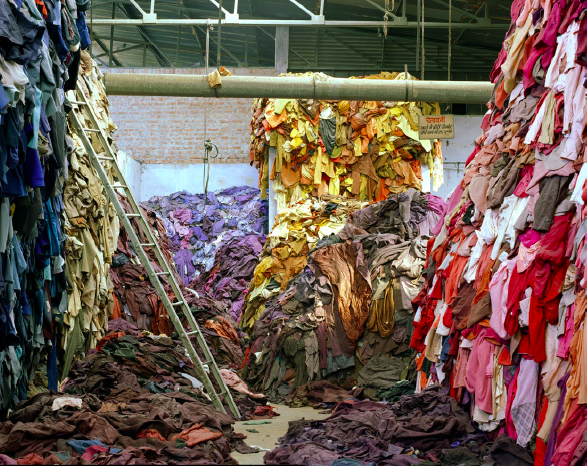
The end of throwaway fashion
Overproduction, overconsumption and waste continues to be a growing challenge caused by the fashion industry’s ‘take, make, dispose’ model where mostly non-renewable materials are extracted, made into products, and ultimately either sent to landfill or incinerated when no longer used. While it is estimated that 100 billion products are made each year, the 2022 Fashion Transparency Index found that just 15% of brands disclose data on the quantity of products made annually, leaving us with no way of understanding the scale of the situation, let alone how to tackle it. And despite many brands championing circular solutions and use of recycled materials, the Index found that only 4% of brands disclose the percentage of products designed to enable closed loop or textile to textile recycling.
Globally, an estimated 92 million tonnes of textiles waste is created each year and, in the UK alone, of the 300,000 tonnes of clothing donated to charity annually, 80% goes to waste. The rise of fast fashion has made overconsumption and disposable clothing our new normal, but we as consumers have the power to change this. By extending the life of garments you can challenge the idea of throwaway fashion, and save clothes from landfill or incineration.
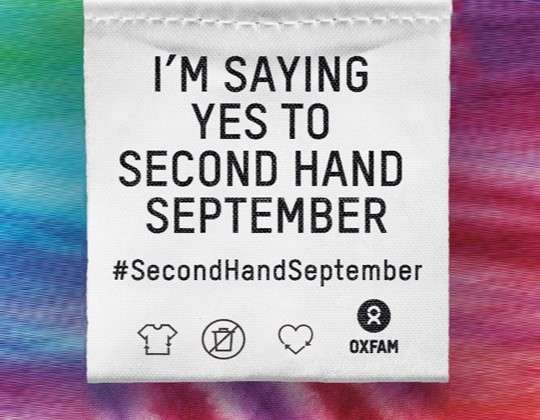
How to take part in Secondhand September
To take part in Secondhand September, first you can pledge to not buy any new clothes for the whole month; you can do this on social media with #SecondhandSeptember and join a network of conscious individuals, which will help keep you inspired and motivated throughout the month. Alternatively, you can write it down and keep it somewhere you’ll see it; on your mirror, by your bed, or even in your purse!
Once you have committed to the challenge you can only buy items that are pre-loved, but there is no shortage of beautiful, second-hand items ready to be cherished. When you first start shopping secondhand, it can be really overwhelming and hard to know where to start. So we’ve compiled a list of advice and tips that you can refer back to this month:
Tips for shopping secondhand:
- Have a clear idea of what your personal style is, so you’re not overwhelmed by options or pick items randomly
- Don’t just buy something because it is cheap, actually consider if you really love the item
- Ask yourself questions: will this item go with the rest of my wardrobe? Can I imagine it with multiple outfits? Am I willing to care for it properly?
- Get stuck in – one of the best things about thrifting is rummaging through the rails and discovering something really beautiful
- If you’d prefer to shop online, platforms like Depop, Vinted and Ebay have thousands of pre-loved clothes ready to find a new home – if you’re into vintage, you can find items on sites like Etsy and ASOS Marketplace
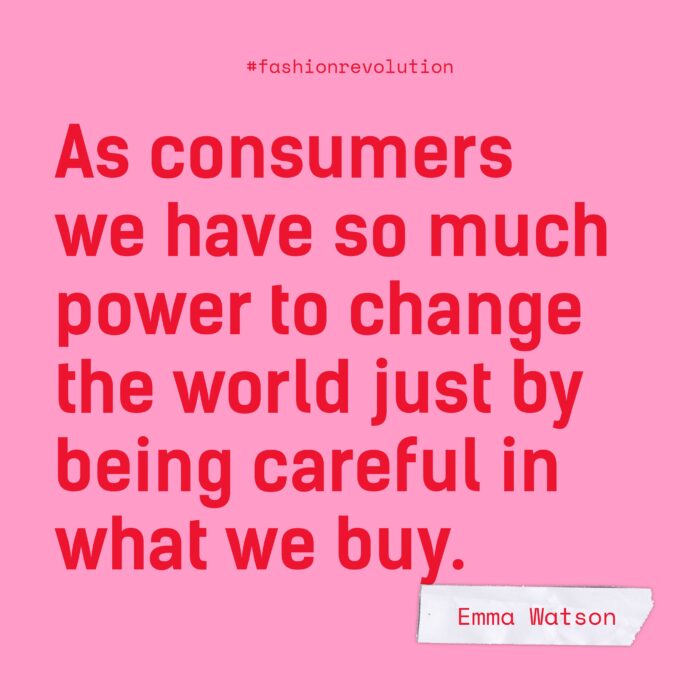
Challenging consumption
It’s important to remember, however, that during Secondhand September, what we’re really challenging is overconsumption. But there are many ways you can take part that don’t revolve around shopping. You could attend or host a clothes swap, exchanging your old clothes with your friends or your community to refresh your wardrobes without spending a penny. You can revisit your own wardrobe and fall back in love with your existing pieces, and rethink your personal style by reflecting on your relationship with fashion and the trend cycle. And most importantly, you can learn how to care for your clothes properly, to ensure they will last for years to come. Remember, the most sustainable item of clothing is the one already in your wardrobe.
Loved Clothes Last
Learning how to properly care for your clothes is one of the most important things you can do, as it keeps clothing in use for as long as possible. By taking the time to learn about your clothes and how to keep them looking their best, you are investing in your wardrobe and reducing your need for new clothes.
How to care for your secondhand clothes:
- It may seem obvious but – read the care label! Learn what the symbols on your clothes labels mean and take the time to care for them like the good friends they are
- Air dry – not just good for the planet but good for your clothes too! Studies show that tumble drying can cause significant damage to clothing, mainly in regards to shrinking and wearing fabric down.
- Wash less – our clothes don’t need to be washed nearly as frequently as we think. Only wash an item if it is visibly dirty and if it’s just a small stain, spot-clean it with stain remover
- Brush up on your sewing skills – we’re not expecting you to be able to create a new dress from scratch, but basic repairs such as hemming, darning, and replacing buttons can go a long way. Anything you don’t feel comfortable doing, seek out a tailor.
If you’d like to find out more about caring for your clothes, check out our Loved Clothes Last zine. We also have a Pinterest board full of care tips, sewing tutorials, and DIY inspiration for you to explore.
Further Reading
Sustainable style experts share their #SecondhandSeptember clothing love stories
Solving the secondhand sizing conundrum
How less can be more for yourself, the planet, and the people around you

